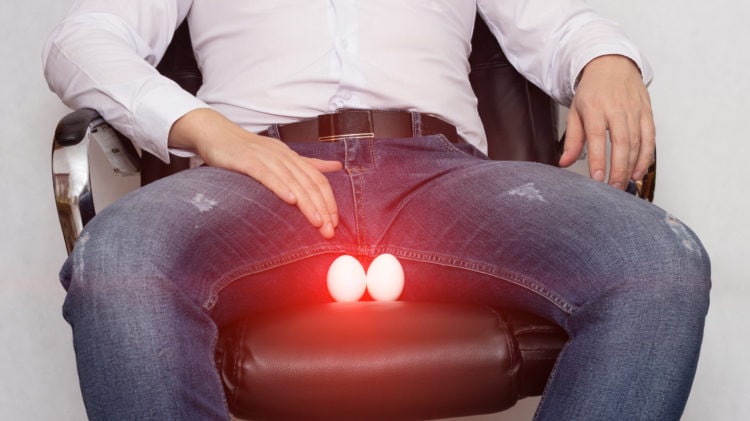Testicular cyst – when it comes to your balls, you probably don’t like the idea of anything being lumpy. Yet having a testicular cyst is a surprisingly common condition and doesn’t have to be worrying.
Whenever you find something is different with your balls it’s best to see a doctor. Medical experts advise checking your balls regularly for any changes. If you experience any discomfort in your testes, it can be normal but if it persists it’s best you get it checked out.
Men and boys of all ages can develop testicular cysts at any stage of their lives. A testicular cyst is typically defined as being an abnormal mass or lump in the testicles (balls). They can be painless or cause some discomfort and can form after an injury, randomly or due to an underlying medical condition.
What is a testicular cyst?
Testicular cysts vary in type and cause. When you see a doctor, they will be able to diagnose exactly what kind of cyst you have in your testes. Two of the most common types of testicular cyst are epididymal and spermatocele.
Healthline explains how epididymal cysts occur:
“An epididymal cyst occurs when the long, coiled tube behind your testicles called the epididymis becomes filled with fluid and can’t drain. If it contains sperm, it’s known as a spermatocele. This form of testicular lump is very common. It most often resolves on its own.”
Not all testicular cysts indicate that someone has testicular cancer. Often somebody can have a testicular cyst for years without ever having any issues. A lot of testicular cysts are benign and will remain harmless without any treatment. But getting a medical examination will help diagnose what the exact issue is.
Causes & symptoms:
A lot of men will be confused as to what causes testicular cysts. There’s a wide range of reasons why someone may develop a lump in their testes. Because there are different types of testicular cyst, the causes behind them vary.
The most common symptoms of a testicular cyst include:
- Varicocele cysts usually don’t have any symptoms other than a squishy lump or one testicle feeling heavier. 1/7 men have these and it’s a common type of testicular cyst.
- Hydrocele cysts cause visible swelling and some abdominal pain in adults, this is due to a collection of fluid.
- Epididymal cysts are generally painless but may make the testicle feel heavier. They usually resolve by themselves though can lead to infection.
- Pain or tenderness in the testicles
- Swelling on one or both testicles
- You can also experience fever, vomiting and nausea.
- Feeling pressure in your balls which makes you want to urinate more often.
- Having an STI which has caused a bacterial infection.
- Blood in your urine.
In more extreme cases, some men may experience testicular torsion after an injury to their scrotum. Men with a hernia can also find their scrotum becomes enlarged more than normal.
Diagnosis & Treatment
When you have a benign testicular cyst which isn’t causing you any problems, most doctors will recommend leaving it alone. Many men can have a small lump in their balls for their entire lives and never have an issue. But if you do experience pain due to the cyst there are treatment options available.
If you develop epididymitis from a testicular cyst, a doctor may recommend a course of antibiotics and sexual health screening. Complications from common STIs like chlamydia and gonnorrhea can lead to bacterial infections in the epididymal tube. If left untreated this could negatively affect fertility.
In some cases, a testicular cyst can be a sign of testicular cancer. Doctors will be able to diagnose this through a series of tests including ultrasounds and possibly a tissue biopsy.
If cancer is diagnosed, it is treatable when caught early. Testicular cancer is one of the most common cancers to affect young men and can be treated through radiotherapy, surgery and chemotherapy with success.

